****** 共同通信社、2006年5月2日
産科医減少、少子化に拍車 「日本の痛み」と米紙
【ワシントン1日共同】1日付の米紙ワシントン・ポストは一面で、少子化が進む日本で産婦人科医が減少しており、高齢者医療への投資増大も手伝って、少子化に拍車を掛けていると報道。女性が一生の間に産む子どもの人数を示す「合計特殊出生率」が戦後最低の1.29を記録した日本の「出生に伴う新たな痛み」を解説した。
同紙特派員は島根県・隠岐島で、島内に産婦人科医がいないため、島を離れて出産しなくてはならない妊婦らを取材。首都圏の神奈川県でも産婦人科医院の閉鎖が相次ぎ、少なくとも1000人の妊婦が1時間以上かけて東京の病院に通院しなくてはならないとも報じた。
***** The Washington Post Company, May 1, 2006
http://www.washingtonpost.com/wp-dyn/content/article/2006/04/30/AR2006043000936_pf.html
In Japan, New Pains Suffered at Childbirth
Parents-to-Be Face Doctor Shortage
By Anthony Faiola
Washington Post Foreign Service
Monday, May 1, 2006; A01
OKI ISLAND, Japan -- If childbirth could be conveniently timed, then Erika Yamauchi, a ruddy 22-year-old housewife eight months pregnant with her second child, would make a note in her planner to go into labor on a Monday. Preferably around 10 a.m.
In a nation where a chronically low fertility rate is causing the bottom to fall out of the baby-birthing business, this fishing community of 17,000 was forced to mothball its only maternity ward last month after losing its last local obstetrician. Now Yamauchi and 57 other expectant mothers here have to make do with temporary obstetricians flown in from another island on Mondays -- when they attend from 10 a.m. to 5:30 p.m. before boarding evening flights back home.
Pregnant women are being asked to give birth at faraway regional hospitals and babies are unlikely to cooperate with their new deadlines. If Yamauchi or the others go into early labor, they have been warned to expect an emergency helicopter ride across 40 miles of water to the nearest functioning maternity ward. "A helicopter! Can you believe it?" Yamauchi exclaimed, clutching her belly with a nervous laugh.
The expectant mothers of Oki Island have joined thousands of other pregnant women across Japan who are now facing a major complication: a national shortage of obstetricians. In a rapidly aging nation with one of the world's lowest birthrates, the number of doctors entering child-related specialties is plummeting -- stretching those who are left so thin that they can no longer manage existing caseloads.
Analysts attribute the shortage partly to a declining interest in obstetrics among medical students, who are wary of the long hours, high malpractice risk and relatively average pay. But whatever the cause, the shortage is turning the miracle of birth into a logistical nightmare.
Yamauchi, for instance, will have to leave her family behind on this island 375 miles southwest of Tokyo when she departs to deliver her second child. Her 26-year-old husband, Yuuhi, cannot get the time off from his job as a car salesman to accompany his wife. He anguishes about missing the birth, and perhaps going a week or more before getting a glimpse of his newborn. When Yamauchi leaves, she will also be kissing goodbye to Hinase, the couple's rambunctious 16-month-old toddler.
"I'm scared about the possibility of being alone when I give birth," she said. "I knew this was happening in other parts of Japan, but you never expect it to happen in your own town. This is not the kind of stress I should be under right now. It makes you think seriously about having another child."
The obstetrics crisis, health officials say, has emerged as one of the biggest obstacles in the struggle to avoid Japan's date with depopulation. Japan's fertility rate, the average number of children born to a woman over a lifetime, is at a record low of 1.29 -- compared with 2.1 in the United States. As more Japanese die than are born, the population fell by nearly 20,000 to 127,776,000 in 2005 -- the first decline since the census started in 1920. If nothing is done to reverse that trend, the population is projected to fall to about 100 million by 2050, according to government statistics.
With Japan stridently opposed to large-scale immigration that could alleviate the problem, the obstetrics crisis has raised serious questions about how this country can continue to operate the world's second largest economy and cover the costs of its huge elderly population. One in five Japanese are 65 or older.
Meanwhile, having a child here has become more complicated than at any point in the post-World War II era. In 2004, 163 hospital maternity wards, or 10 percent of the national total, closed and hundreds more are planning to cease operation.
That is partly because fewer babies are being born, making it financially untenable for hospitals to provide care for the dwindling number of pregnant women. But health officials are also citing an alarming drop in the pool of obstetricians -- whose ranks are shrinking faster than demand is declining.
Even as the overall number of new doctors has steadily risen, the number of practicing obstetricians plunged 40 percent from 1992 to 2004, the most recent year for which statistics are available, according to Japan's Health Ministry. That plunge is set to dramatically accelerate. About 40 percent of Japan's 727 obstetricians are now 60 or older, leaving officials bracing for a wave of retirements.
"The lack of obstetricians is one of our gravest problems," said Yoshiko Saito, deputy director of the Health Ministry's Maternity and Child Division. "If we cannot reverse this trend, we will be looking at a collapse in our ability to provide basic care for the pregnant women of Japan."
Local officials have tried virtually everything to boost the birthrate -- including cash payouts to couples who have children. But the difficulties remain.
On Hokkaido and Shikoku, two of Japan's four main islands, the shortage of obstetricians is so severe that some births are now being induced to coincide with times when doctors are available. Although the problem is worse in rural areas, even dense urban zones such as Kanagawa prefecture, home to Japan's second largest city, Yokohama, are feeling the shortage. As dozens of maternity wards have closed, health officials estimate that at least 1,000 pregnant women there are now being forced to make the 60- to 90-minute journey to Tokyo area hospitals for delivery.
Doctors' groups are blaming both the national and the local governments, saying they have not aggressively addressed the key factors behind the shortage. With Japanese women remaining single longer and having children later, incidences of risky deliveries have sharply multiplied -- leading to a big rise in malpractice suits. In Japan, the same obstetrician who attends a woman during her pregnancy is also almost always called in to deliver her child -- meaning relatively longer hours both on duty and on call. But Japan's national medical system does not offer obstetricians commensurately higher pay for their extra hours.
Additionally, obstetrician groups say, hospitals are increasing spending on geriatric care even in regions where the need to boost maternity services is great.
"This is terribly short-sighted," said Ryoichiro Miyazaki, secretary general of the Japan Association of Obstetricians and Gynecologists. "You see a focus on spending for the elderly at the expense of obstetrics. But if you don't provide women with maternity care, you discourage them from having children at all. And if they don't have children, there won't be a future generation of Japanese to grow older. It's a vicious circle."
Alarmed, the government has taken a series of steps this year aimed at addressing the crisis -- including the creation of government arbitrators to review malpractice suits filed against obstetricians. But change is unlikely to come quickly enough to help the women of Oki Island.
Two weeks ago, the 58 expectant mothers on the island community were called together for a meeting at the local hospital. There, they were informed by authorities that the island's only obstetrician was being reassigned to a larger hospital with greater need on Honshu, Japan's main island. Although local officials staged a nationwide search for a replacement, the one willing candidate canceled at the last minute because his elderly parents fell ill.
Yamauchi and the other women are being asked to spend their ninth month of pregnancy off the island, near the hospital where they will now give birth. They are being offered about $1,500 for temporary housing and transportation costs for both themselves and family members. But the Yamauchis, like many of the other young couples with babies on the way, find themselves in a terrible bind.
Unable to take vacation time, Yamauchi's husband is deeply troubled about his very pregnant wife leaving his side. "I won't be there," he said, dejectedly shaking his head. "What if something happens? I won't be there."
The couple hopes Yamauchi's mother can accompany her. But Yamauchi may be away for a month or more, and her mother -- a caregiver to the family's grandparents -- will be unable to stay with her the whole time.
"I am going to give birth soon and I still don't know where and who I will be with," she said. "This is supposed to be a happy time. It is just not fair."
Special correspondent Akiko Yamamoto contributed to this report










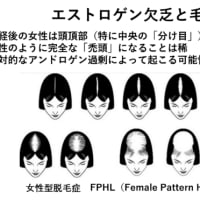
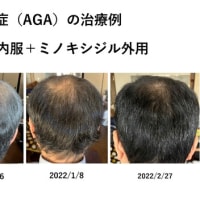
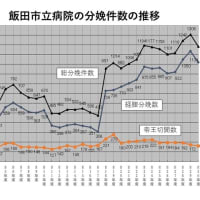

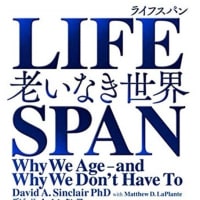
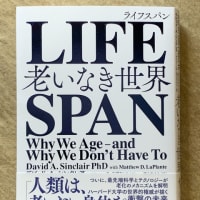

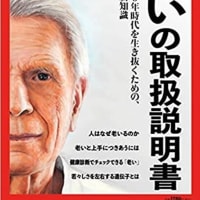

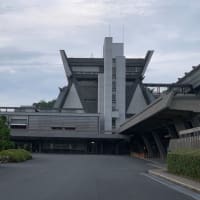
赴任の仕方(個人なのか、大学派遣なのか)で、まだ未確定のようです。
そうでなければ、解決にはとうていなりえません。
この決着の仕方は、県庁側の思惑通り。つまり「何とか一人、工面したよ」と県庁の役人さんが立派にいってのけれる理由を作ったようなものであると思います。
問題の根底を、解決するものでは到底なさそうですね。
ちょっと辛辣すぎました。→前のコメント。
必要であれば削除していただいても、かまいません。
先日の日本産婦人科学会で今春産婦人科の新入局員が0だった京都府立医大の教授も同じことをおっしゃり、今の状況の何がいけないのかを行政が全くわかっていない、憤っておられたそうです。
なんでも、京丹後市(※注:僻地です)などから『一人でいいから産婦人科医を送ってほしい。たった一人でいいんです』『昔は一人でも産婦人科の先生は来てくれていた。今の医者はわがままで来てくれない』等言われたそうで…どこも似たり寄ったりなんでしょうね。その一人がどのような仕事をしなければならないのか、バックアップなしだとどうなるのか、時代がどう変わって来つつあるのか…わかっていない。
62歳の先生…いろいろな意味で大変だなと思います。善意で行かれるのであれば、ミイラ取りがミイラにならなければいいと思いますが…。
つけて、遵守することを確約させますが。
(1)緊急を要する場合、ドクター・ヘリなどで、
本土の3次救急に可及的早期に搬送できる
体制にすること。
(2)万が一の医療事故に際しては、刑事免責とすること。
(3)民事面でも、県が全面的に責任を負うこと。
じゃなきゃ、行けませんって。
体制にすること。
これに関しては、既に行われています。
隠岐の救急搬送は、出雲市にある県立中央病院の屋上へリポートに着いており、数年前から産婦人科の救急搬送では、中央病院の産婦人科医師が同乗して隠岐空港に飛び、患者さんを搬送しています。